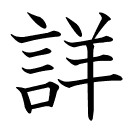As discussed in the previous segment, many homophones have arisen due to the overuse of on-yomi, which are short and phonetically limited, as well as phonological drift.
To better understand why this phonological drift happened the way it did, we need to understand the state of affairs in Japan before the modern era. Like most places around the word, access to literacy and education was limited to the wealthy, higher classes, and back then, being educated meant knowing Chinese and Chinese culture, in much the same way that in Europe, being educated meant knowing Latin.
This would have been bad enough if you lived in a society with a simple writing system, like those in Europe, but was utterly disastrous in Japan. Everyday Japanese people, who were typically farmers or merchants, may have been able to teach themselves kana or a few basic kanji for day-to-day living, but they would not have had the luxury of dedicating years to studying Chinese and the thousands of kanji that were required to read anything meaningful in either language.
As a result, kanji, and by extension Chinese based words, known as 漢語 (kango), were the domain of the literary elite. In Japanese, kango and Yamato-kotoba (native Japanese words) are not equal. There is a funny thing in linguistics, called register, which is the idea that different forms of language are appropriate in different social settings, with words having an implicit level of formality or lack there of. In Japanese, kango, which are pronounced with on-yomi, are considered to sound educated, formal or scientific. Yamato-kotoba, pronounced with kun-yomi, are generally considered to be plain and informal.
We see the same phenomenon in English too. Words of Germanic words are perceived very differently to words of French, Latin, or Greek origin. For example, the word drink (Germanic) sounds plain, but the word beverage (French), sounds fancy.
In the modern era, all Japanese people know plenty of Kango as well as Yamato-kotoba, and use both on an every day basis. Kango comprise roughly 18% of words heard in day-to-day speech and a whopping 50-60% of words in formal writing such as newspapers. But things in old Japan were different. The average Japanese person would not have known very many kango. The vocabulary of the vast majority of Japanese would have consisted mostly of Yamato-kotoba while the small number of educated elites used kango primarily amongst themselves. A large amount of kango were created simply to talk about obscure, highly specialized vocabulary. In effect, it was almost as if the different social classes in Japan were speaking different dialects of Japanese.
Because of this, when the pronunciation of the language used by the vast majority of the population drifted over the course of hundreds of years, it did so without any concern for what effect this might have on the pronunciation of kango. Language change is not controlled by the small, educated elite, it is guided by the usage of the masses. And in the case of Japanese, the masses did not care about kango or on-yomi.
This point, originally made in the book A History of the Japanese Language by Akiho Yamaguchi, et. al, is nicely summarized here (in Japanese) by blogger Shinji Takasugi:
同音異義語が増えて昔の日本人は不便でなかったのか、と今なら思うが、当時は不便に思わなかったのである。なぜなら一般の日本人はあまり漢語を知らず、個人の語彙の中では同音衝突しなかったからだ
Translation: Even though it is thought now that the increase in homophones would have probably been inconvenient to premodern Japanese people, it was probably not considered inconvenient at the time. Since ordinary Japanese people would not have known very many kango, there would not have been many homophonic collisions in their individual vocabulary.
As a result, on-yomi never had the chance to adapt to the needs of the modernizing language. As pronunciation simplified, kun-yomi were able to change and remain phonologically distinct. On-yomi on the other hand grew more and more homophonous. And so when literacy began to increase, and everyday people started to learn more kango, they were left with a whole bunch of words that left much to be desired.
So what can be done about this problem? Is there a way for the Japanese of the 21st century to reduce the amount of homophones in use? I will be discussing possibilities in part IV of this series.

Just a personal opinion, when looking up japanese homophones in dictionaries I feel there are many concepts that are there just to add unnecessary homophones that could be expressed in a combination of yamato kotoba and sino-japanese to disambiguate and get rid of excessive homophones. For example and excuse my still poor Japanese; 過賞 meaning “excesive praise” could be replaced with something like 過ぎた褒め. I feel ancient Japanese just absorbed many words and concepts the way they work in Chinese which doesn’t reflect the nature and needs of the Japanese language without properly adjusting them to Japanese as if the highly literate ancient Japanese were trying to speak in Chinese among themselves. A concept such as 過賞 works in Chinese because of its richer phonology and tones, but for Japanese it only meant forcing Chinese structure onto Japanese colliding tragically.
LikeLike